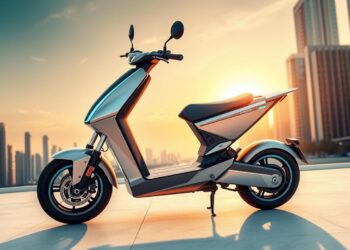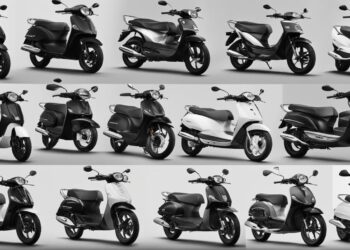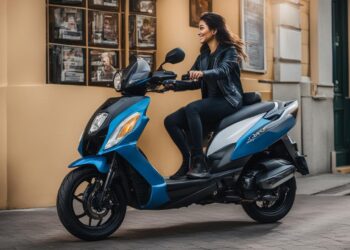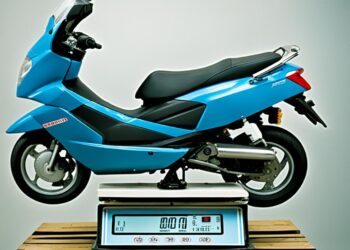Are you considering purchasing a moped? While owning a moped can be a convenient and cost-effective mode of transportation, it’s essential to be aware of the hidden costs that come with ownership. These expenses can quickly add up and catch you off guard if you’re not prepared.
In this section, I will provide a comprehensive overview of the hidden costs associated with owning a moped. Learn about the financial implications of moped ownership and the expenses you may not have considered. By understanding these hidden costs, you can make informed decisions and budget appropriately for your purchase.
Key Takeaways:
- There are numerous hidden expenses of owning a moped that can catch new owners by surprise
- By understanding the true cost of moped ownership, you can budget appropriately and make informed decisions
- Factors such as licensing fees, insurance, and maintenance costs can significantly impact your budget
- Don’t forget to budget for safety gear and accessories to ensure your well-being while driving a moped
- Depreciation and resale value can also affect the overall cost of moped ownership in the long run
Initial Purchase and Licensing Fees
When buying a moped, it’s important to consider the additional costs that come along with it. These can include licensing fees, registration fees, and taxes, which can quickly add up and catch new owners by surprise.
The initial purchase price of a moped may seem affordable, but there are hidden expenses that can significantly increase the overall cost of ownership. For example, in the United Kingdom, the Driver and Vehicle Licensing Agency (DVLA) requires all mopeds to be registered and licensed before they can be legally driven on public roads. The current registration fee is £55, and you’ll also need to obtain a Provisional or Full category AM moped licence, the cost of which varies depending on your age and location.
| Expense | Cost |
|---|---|
| Registration fee | £55 |
| Provisional AM licence (16-19) | £34 |
| Provisional AM licence (20 and over) | £43 |
| Full category AM licence | £81 |
These fees may seem minor, but they’re just the beginning. You’ll also need to consider the cost of insurance and road tax, as well as ongoing maintenance and fuel costs. By taking these hidden expenses into account, you can better prepare yourself for the true cost of owning a moped.
Insurance and Road Tax
When purchasing a moped, it can be easy to focus on the upfront costs of the vehicle and overlook ongoing expenses, such as insurance and road tax. These hidden charges can significantly impact the true cost of owning a moped.
Insurance costs for mopeds can vary depending on a variety of factors, including your location, age, and the model of your moped. It’s important to shop around for the best deal and consider options such as third-party, third-party fire and theft or comprehensive insurance.
Road tax is another expense to consider when owning a moped. In the UK, all vehicles must be taxed to use public roads. The cost of road tax for mopeds is calculated based on engine size and emissions, and can vary from £20 to £68 per year.
| Engine Size | Tax Band | Annual Cost |
|---|---|---|
| Up to 150cc | A | £20 |
| 151cc to 400cc | B | £42 |
| 401cc and above | C | £68 |
It’s important to factor in these hidden charges when determining the true cost of owning a moped. Consider setting aside a budget for insurance and road tax to avoid any unexpected expenses.
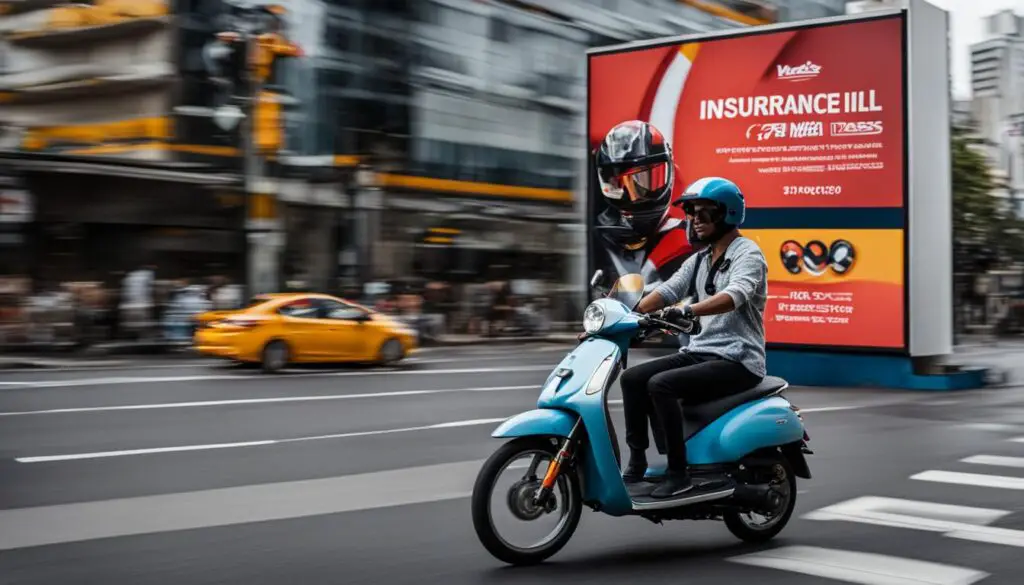
“When I first bought my moped, I was so focused on the initial purchase price that I overlooked the ongoing expenses like insurance and road tax. It’s important to factor in all the costs involved in owning a moped to avoid any financial surprises.”
Fuel and Maintenance Costs
Keeping a moped in good condition requires regular maintenance, and the cost can vary depending on the level of service you need. Routine check-ups can help prevent costly repairs in the future, saving you money in the long run. While it’s tempting to skip service appointments to save money, it always pays off to stay on top of your moped’s maintenance needs.
In addition to maintenance costs, fuel consumption is another significant expense to consider. Mopeds are generally very fuel-efficient, but it’s still important to factor in the cost of gasoline. Fuel prices can vary depending on your location, but on average, you can expect to pay around £5 per gallon. While this may seem like a small cost, it can add up quickly.
Consider investing in a fuel-efficient moped model that can help keep your fuel costs low. Regular cleaning and maintenance can also help improve your moped’s fuel efficiency, saving you even more money over time.
Moped Maintenance Costs Breakdown
| Maintenance Service | Average Cost |
|---|---|
| Oil Change | £30-£50 |
| Tire Replacement | £30-£60 per tire |
| Brake Replacement | £50-£100 per brake pad |
| Spark Plug Replacement | £15-£30 per spark plug |
These are just a few examples of standard moped maintenance services and their average costs. Keep in mind that prices can vary based on your location and the complexity of the repair.
It’s also essential to always have funds set aside for unexpected moped fees. Accidents or breakdowns can happen, and repairing or replacing parts can be costly. Having an emergency fund can provide peace of mind and help you avoid any financial stress that may come with unexpected expenses.
Parking and Storage Expenses
When it comes to owning a moped, the expenses associated with parking and storage can be easily overlooked. However, these expenses can have a significant impact on your budget. Let’s take a closer look at the hidden costs of moped ownership revealed and the moped ownership financial implications of parking and storage.
Firstly, if you live in a city or urban area, finding a safe and secure place to park your moped can be a challenge. Many cities have restrictions on where mopeds can be parked, and leaving your moped in a public place can increase the risk of theft or damage.
To combat this, moped owners may need to invest in private parking or storage, which can come at a cost. For example, some apartment buildings charge extra for parking spaces or storage units, while private parking garages may charge a daily or monthly fee.
Alternatively, moped owners may choose to purchase their own secure storage solution, such as a lockable shed or garage. However, this can be a significant upfront expense, as well as the ongoing maintenance costs of keeping the storage solution secure and in good condition.
Comparing the Costs of Parking and Storage
| Option | Cost |
|---|---|
| Public Parking | Free – £5 per day |
| Private Parking Garage | £50 – £150 per month |
| Private Storage Unit | £50 – £100 per month |
| Purchase of Own Storage Solution (e.g. Lockable Shed) | £200 – £500 upfront cost |
As you can see from the table above, the costs of parking and storage can vary significantly depending on the option you choose. It’s essential to consider not only the upfront costs but also the ongoing expenses and maintenance costs of each option.
Overall, the costs of parking and storage can be an underestimated expense of moped ownership. However, by understanding the hidden costs of moped ownership and the moped ownership financial implications, you can make informed decisions about how best to store and park your moped while keeping your budget in mind.
Safety Gear and Accessories
When it comes to owning a moped, safety is a top priority. However, investing in the necessary safety gear and accessories can come with hidden charges that may not be immediately apparent. In this section, I will discuss the importance of proper safety gear and accessories and offer tips on managing these hidden expenses.
Essential Safety Gear
One of the most critical aspects of moped ownership is proper safety gear. This gear not only protects you in case of an accident but is often a legal requirement. The following are the essential safety gear items you should have:
- Helmet: A helmet is a must-have item for any moped rider. It protects your head in case of an accident and can reduce the risk of serious head injuries. Prices for helmets can vary, but a quality helmet can cost anywhere between £50 and £500. Make sure to choose a helmet that meets safety standards and fits your head properly.
- Protective Clothing: Wearing protective clothing such as gloves, boots, and jackets can help reduce the severity of injuries in case of an accident. While it may be tempting to ride in casual clothing, it’s essential to invest in specialized clothing that is built to protect you.
- Eye Protection: Strong winds while riding can cause eye irritation or even serious injuries. Eye protection can take the form of goggles or a visor on your helmet.
Accessories
In addition to safety gear, there are a variety of accessories that can help improve your riding experience and protect your moped from damage. Here are a few of the most popular accessories:
- Locks: Mopeds are a known target for theft, and investing in locks can help deter thieves. Prices for locks can range from £10 to £100.
- Storage: If you plan to leave your moped parked outside, investing in a specialized storage cover can help protect it from weather damage. Storage prices can vary depending on the size and quality of the cover.
- GPS Tracking: For added peace of mind, you may consider investing in a GPS tracking system. This can help you locate your moped if it is stolen and often comes with a monthly subscription fee.
Overall, safety gear and accessories are essential expenses that should not be overlooked when owning a moped. While these expenses can add up, there are ways to manage and budget for them effectively. By investing in high-quality safety gear and accessories, you can help protect yourself and your moped from potential harm.
Depreciation and Resale Value
When it comes to moped ownership, depreciation and resale value can have a significant impact on your finances. Depreciation refers to the decrease in value that occurs over time as your moped ages and experiences wear and tear. Resale value is the amount of money you can expect to receive if you decide to sell your moped.
While these may be less obvious costs of moped ownership, they are nonetheless important to consider. Over time, your moped will lose value, meaning that you may not be able to recoup the full cost of your initial purchase when it comes time to sell.
Factors like mileage, condition and model will impact the resale value of your moped. Additionally, changes in the market, such as new models or changes in demand, can also impact the amount of money you can expect to receive when selling your moped.
It’s important to keep these costs in mind when budgeting for your moped. While you may not be able to avoid depreciation altogether, there are steps you can take to mitigate its impact. Regular maintenance and care can help keep your moped in good condition for longer, potentially increasing its resale value down the line.
Comparing Resale Values
Let’s take a look at the depreciation and resale value of two popular moped models: the Vespa Primavera and the Yamaha NMax. According to research, the Vespa Primavera depreciates around 16% in the first year of ownership, with an average resale value of £2,782 after three years. The Yamaha NMax, on the other hand, depreciates around 22% in the first year of ownership, with an average resale value of £1,861 after three years.
| Moped Model | Depreciation Rate (Year 1) | Average Resale Value (After 3 Years) |
|---|---|---|
| Vespa Primavera | 16% | £2,782 |
| Yamaha NMax | 22% | £1,861 |
As the data shows, the Vespa Primavera has a higher resale value and depreciates at a slower rate than the Yamaha NMax. However, it’s important to note that these figures are averages and will vary depending on a number of factors, such as the condition of the moped, location, and demand.
By taking resale value and depreciation into account when making your moped purchasing decision, you can make a more informed choice that aligns with your budget and financial goals.
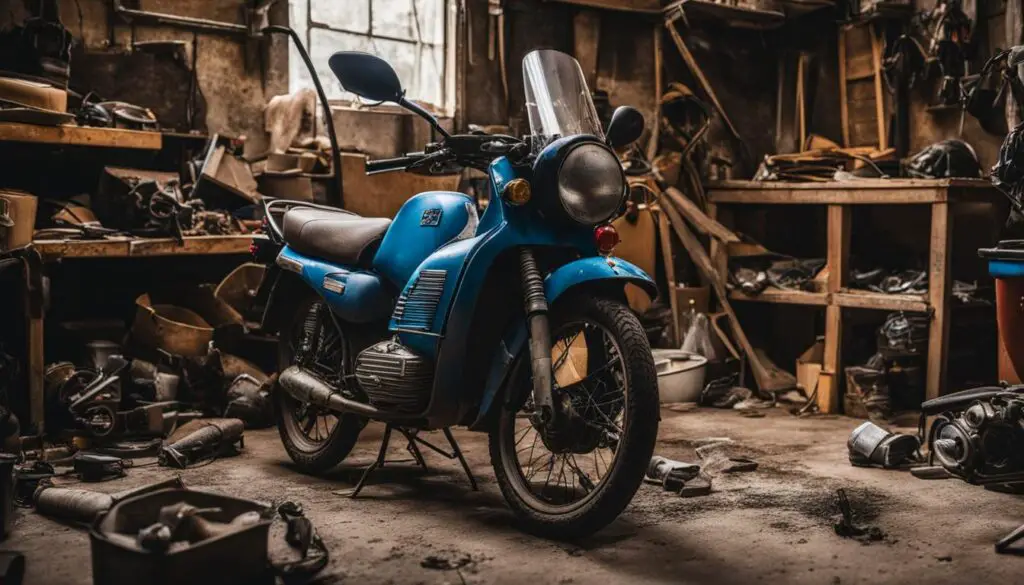
Conclusion
In conclusion, owning a moped can be a practical and cost-effective form of transportation, but it’s important to consider the hidden costs associated with moped ownership. From initial purchase and licensing fees to ongoing expenses such as insurance, maintenance, and parking, the true cost of owning a moped can add up quickly.
One of the most significant expenses to consider is depreciation and resale value. As with any vehicle, a moped’s value will decrease over time, and it’s essential to understand how this can impact your investment.
Despite the potential for unforeseen costs, owning a moped can still be a sensible choice for many individuals. By understanding the full range of expenses and budgeting accordingly, you can make informed decisions and ensure you’re well-prepared to manage the financial implications of moped ownership.
Remember, safety gear and accessories are also a necessary expense to ensure a safe and enjoyable riding experience. Be sure to budget for quality helmets, locks, and other items to keep you and your moped secure.
By considering all of the factors involved in owning a moped, you can make an informed decision about whether it’s the right choice for you. With careful planning and attention to detail, you can manage the hidden costs of moped ownership and enjoy the convenience and affordability that this form of transportation can provide.
FAQ
What are the hidden costs of moped ownership?
The hidden costs of moped ownership include initial purchase and licensing fees, insurance and road tax, fuel and maintenance costs, parking and storage expenses, safety gear and accessories, and depreciation and resale value. These expenses can add up and impact your overall budget.
What additional costs are involved in buying a moped?
In addition to the initial purchase price, you may have to pay licensing fees, registration fees, and taxes. These additional costs can catch new owners by surprise, so it’s important to factor them into your budget.
How does insurance and road tax affect moped ownership costs?
Insurance and road tax are often overlooked expenses associated with owning a moped. The cost of insurance and road tax can vary based on factors like your location, age, and moped model. It’s essential to consider these charges when budgeting for moped ownership.
What are the ongoing fuel and maintenance costs of owning a moped?
Owning a moped requires regular fuel fill-ups and maintenance. You need to consider the cost of fuel consumption as well as the expenses associated with servicing and repairs. These ongoing costs can impact your overall budget.
Are there parking and storage expenses for owning a moped?
Yes, parking and storage for your moped involve expenses that are often underestimated. You may have to pay for designated parking spots or secure storage facilities. It’s important to explore the various options and associated costs to safely park and store your moped.
What safety gear and accessories should I budget for when owning a moped?
When owning a moped, you should budget for essential safety gear and accessories. This includes helmets, locks, reflective clothing, and other protective items. These items are important for your safety and can impact your overall costs.
How does depreciation and resale value affect the financial aspects of moped ownership?
Over time, moped ownership can be affected by depreciation and resale value. Understanding how these factors impact your investment is crucial. Additionally, consider the potential costs associated with selling your moped, as the resale value can vary.
Can you provide a summary of the hidden costs of moped ownership?
In summary, the hidden costs of moped ownership include initial purchase and licensing fees, insurance and road tax, fuel and maintenance costs, parking and storage expenses, safety gear and accessories, and depreciation and resale value. These expenses should be considered when budgeting for moped ownership to make informed decisions about your investment.




